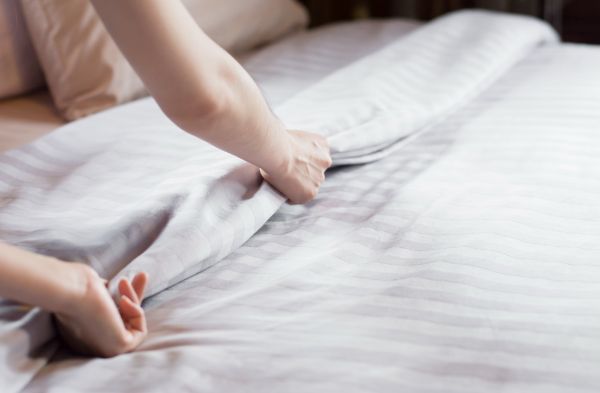Bed sheets play a vital role in ensuring a comfortable and restful sleep. As an essential part of our bedding, it’s important to understand the lifespan of bed sheets to maintain their quality and make informed purchasing decisions.
In this article we will delve into the factors that determine the longevity of bed sheets, provide essential care tips, and guide you on how to determine when it’s time to replace them.

Table of Contents
Factors Affecting the Lifespan of Bed Sheets
- Fabric Quality: The quality of the fabric used in bed sheets greatly impacts their durability. Sheets made from high-quality materials such as Egyptian cotton, Supima cotton, or bamboo tend to be more long-lasting and resistant to wear and tear. Lower-quality materials or blends may not hold up as well over time.
- Thread Count: Thread count refers to the number of threads woven into one square inch of fabric. While higher thread counts are often associated with softer sheets, they don’t necessarily determine longevity. Optimal thread counts range between 200 and 800, striking a balance between durability and comfort.
- Maintenance and Care: Proper care and maintenance significantly impact the lifespan of bed sheets. Factors such as washing frequency, detergent selection, water temperature, and drying methods all play a role. Neglecting to follow manufacturer guidelines or using harsh chemicals can lead to premature wear and tear.
- Sleeping Habits: Individual sleeping habits and lifestyle factors can influence how long bed sheets last. Activities like frequent tossing and turning, pet presence on the bed, or sitting on the bed in daytime clothing can contribute to faster deterioration.
Guidelines for Bed Sheet Care
To maximize the lifespan of your bed sheets, follow these essential care tips:
- Regular Washing: Bed sheets should be washed regularly, ideally every one to two weeks, to remove dirt, oils, and sweat. Regular washing helps maintain freshness and hygiene.
- Gentle Washing: Use a mild detergent and avoid harsh chemicals or bleach that can weaken the fabric fibers. Choose a delicate or gentle cycle and opt for cold or lukewarm water to minimize shrinkage and color fading.
- Proper Drying: Tumble dry your sheets on low heat or, even better, line dry them to minimize heat damage. Avoid over-drying, as it can cause shrinkage and increase the likelihood of wrinkling.
- Storage: Store bed sheets in a cool, dry place away from direct sunlight. Avoid storing them in plastic bags, as this can trap moisture and lead to musty odors or mold growth. Instead, use breathable fabric bags to protect them.
Signs It’s Time to Replace Bed Sheets
While the lifespan of bed sheets can vary depending on several factors, certain signs indicate it may be time to invest in new ones:
- Visible Wear and Tear: Look for signs of fraying, thinning fabric, or holes. If the sheets are visibly worn out, it’s a clear indication that they have reached the end of their lifespan.
- Loss of Elasticity: Elasticized corners that no longer fit snugly around the mattress indicate that the sheets have lost their elasticity and may not stay in place during sleep.
- Fading Colors: Over time, bed sheets may start to fade due to washing and exposure to sunlight. If the colors have significantly dulled, it may be time to consider replacement.
- Uncomfortable Texture: As sheets age, they may become rough or develop a worn-out texture. If your sheets are no longer providing a soft and comfortable sleep surface, it’s a sign that they need to be replaced.
Conclusion
Understanding the lifespan of bed sheets is crucial for maintaining their quality and ensuring a comfortable sleep environment. By investing in high-quality fabrics and following proper care practices, you can extend the longevity of your bed sheets.
Remember these key points:
- Choose bed sheets made from high-quality materials like Egyptian cotton, Supima cotton, or bamboo.
- Consider the thread count, aiming for a balance between durability and comfort.
- Follow manufacturer guidelines for washing and drying your sheets.
- Use mild detergents and avoid harsh chemicals or bleach.
- Store your bed sheets in a cool, dry place away from direct sunlight.
- Watch for signs of wear and tear, loss of elasticity, fading colors, and uncomfortable texture, indicating it may be time to replace your sheets.
By taking proper care of your bed sheets and recognizing when they have reached the end of their lifespan, you can ensure a restful and comfortable sleep experience. Remember, investing in quality sheets and maintaining them well will contribute to a cozy and inviting bedroom atmosphere.

Alex P. Davis has a BA in Interior Design from The New York School of Interior Design and 10 years of experience expertly designing sophisticated interiors.
